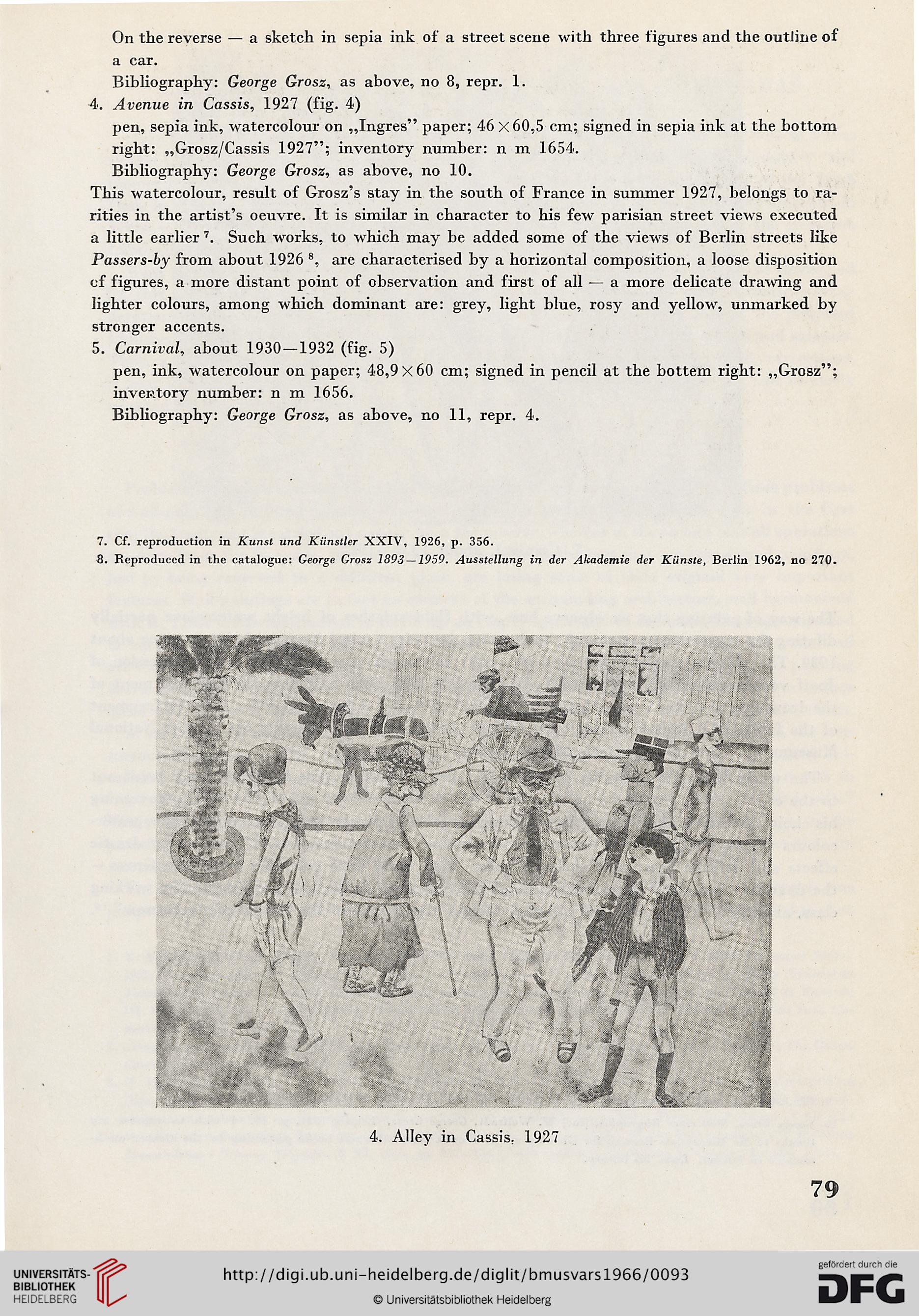On the reverse — a sketch in sepia ink of a street scenę with three figures and the outline of
a car.
Bibliography: George Grosz, as above, no 8, repr. 1.
4. Avenue in Cassis, 1927 (fig. 4)
pen, sepia ink, watercolour on „Ingres" paper; 46 X 60,5 cm; signed in sepia ink at the bottom
right: „Grosz/Cassis 1927"; inventory number: n m 1654.
Bibliography: George Grosz, as above, no 10.
This watercolour, result of Grosz's stay in the south of France in summer 1927, belongs to ra-
rities in the artist's oeuvre. It is similar in character to his few parisian street views executed
a little earlier'. Such works, to which may be added some of the views of Berlin streets like
Passers-by from about 1926 8, are characterised by a horizontal composition, a loose disposition
cf figures, a more distant point of observation and first of all — a morę delicate drawing and
lighter colours, among which dominant are: grey, light blue, rosy and yellow, unmarked by
stronger accents.
5. Carnival, about 1930—1932 (fig. 5)
pen, ink, watercolour on paper; 48,9x60 cm; signed in pencil at the bottem right: „Grosz";
nwep.tory number: n m 1656.
Bibliography: George Grosz, as above, no 11, repr. 4.
7. Cf. reproduction in Kunst und Kiinstkr XXIV, 1926, p. 356.
8. Reproduced in the catalogue: George Grosz 1893 — 1959. Ausslellung in der Akademie der Kiinste, Berlin 1962, no 270.
4. Alley in Cassis, 1927
79
a car.
Bibliography: George Grosz, as above, no 8, repr. 1.
4. Avenue in Cassis, 1927 (fig. 4)
pen, sepia ink, watercolour on „Ingres" paper; 46 X 60,5 cm; signed in sepia ink at the bottom
right: „Grosz/Cassis 1927"; inventory number: n m 1654.
Bibliography: George Grosz, as above, no 10.
This watercolour, result of Grosz's stay in the south of France in summer 1927, belongs to ra-
rities in the artist's oeuvre. It is similar in character to his few parisian street views executed
a little earlier'. Such works, to which may be added some of the views of Berlin streets like
Passers-by from about 1926 8, are characterised by a horizontal composition, a loose disposition
cf figures, a more distant point of observation and first of all — a morę delicate drawing and
lighter colours, among which dominant are: grey, light blue, rosy and yellow, unmarked by
stronger accents.
5. Carnival, about 1930—1932 (fig. 5)
pen, ink, watercolour on paper; 48,9x60 cm; signed in pencil at the bottem right: „Grosz";
nwep.tory number: n m 1656.
Bibliography: George Grosz, as above, no 11, repr. 4.
7. Cf. reproduction in Kunst und Kiinstkr XXIV, 1926, p. 356.
8. Reproduced in the catalogue: George Grosz 1893 — 1959. Ausslellung in der Akademie der Kiinste, Berlin 1962, no 270.
4. Alley in Cassis, 1927
79




